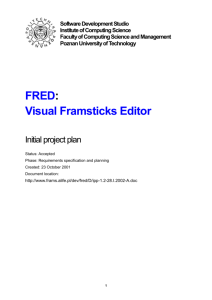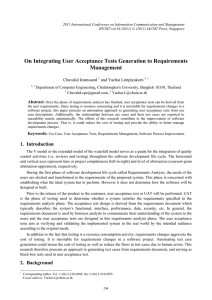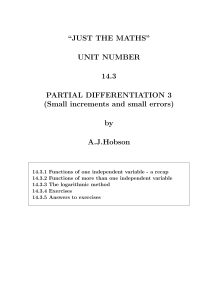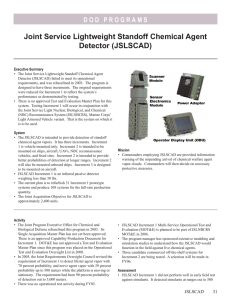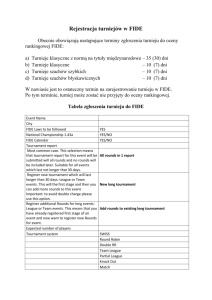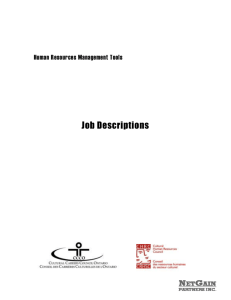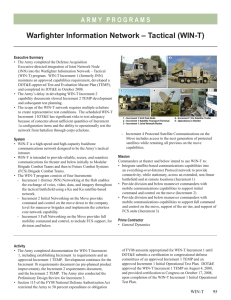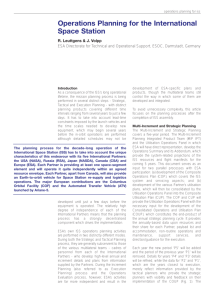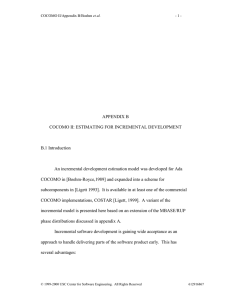Business Solution Document
advertisement
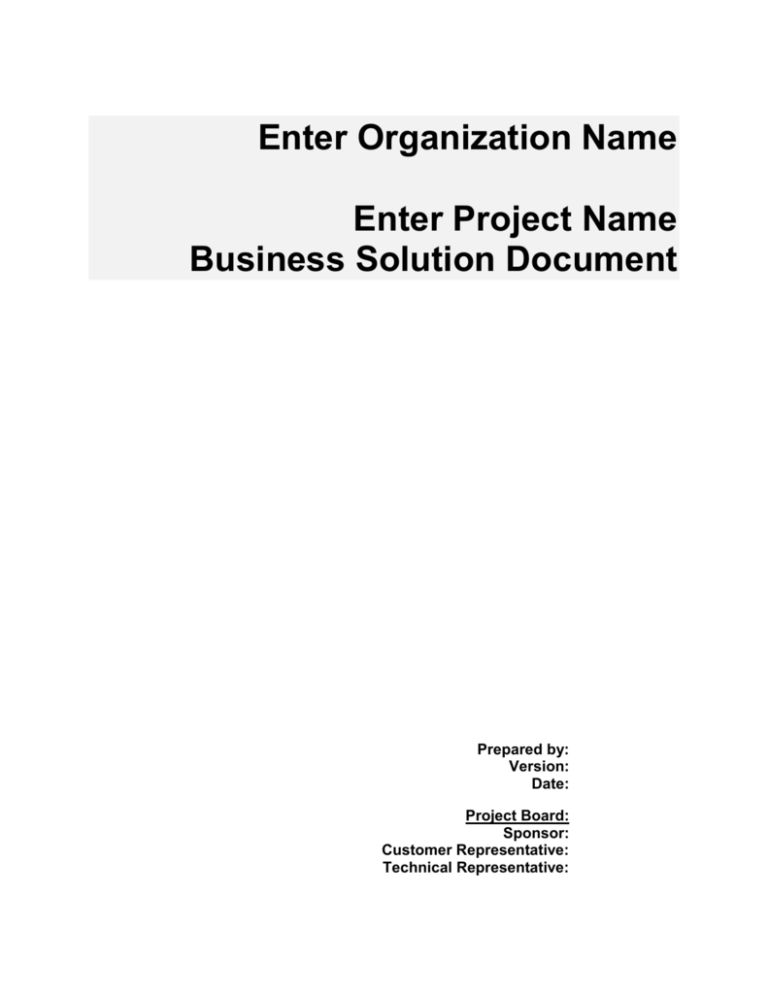
Enter Organization Name Enter Project Name Business Solution Document Prepared by: Version: Date: Project Board: Sponsor: Customer Representative: Technical Representative: Approval Signatures Name: Title: Name: Title: Name: Title: Name: Title: Name: Title: Name: Title: Name: Title: Name: Title: Name: Title: Name: Title: Enter Project Name Business Solution Document Enter Organization Name Document History Reviewed By Organization Person Copied To Organization Person Revision Record Number 106750192 Date and Sections Notes iii 3/6/16 Acronyms Acronym 106750192 Description v 3/6/16 References Document Title Problem/Requirements List User Object Model 106750192 File Name wp_prl.doc wp_uom.doc vii 3/6/16 Table of Contents 1. EXECUTIVE SUMMARY 1 2. INTRODUCTION 2 2.1 2.2 2.3 2.4 Document Purpose Document Organization Project Background Related Documents 2 2 2 2 3. CRITICAL PERFORMANCE MODEL 3 3.1 3.2 3.3 Introduction Business Objectives Critical Performance Areas 3 3 3 4. BUSINESS MODEL 4.1 Problems and Requirements 4.1.1 4.1.2 4.2 4.3 4.4 4.5 4 Introduction Problem/Requirements List 4 4 User Definition Task Model Business Process Model User Object Model 4.5.1 4.5.2 4.5.3 4.6 4 5 6 7 8 Introduction User Object Model Diagram User Objects 8 8 8 Data Model 4.6.1 4.6.2 4.6.3 9 Introduction Data Model Diagram Entity Descriptions 9 9 9 5. DELIVERY INCREMENT DESIGN 5.1 5.2 5.3 10 Delivery Increment Definitions Acceptance Criteria Program Management Procedures 106750192 10 10 10 ix 3/6/16 1. EXECUTIVE SUMMARY 106750192 1 3/6/16 2. INTRODUCTION 2.1 Document Purpose The purpose of this document is to provide a clear statement of the Business Requirements for the Enter Project Name project. The project used several modeling techniques to define requirements and this document includes the results of these techniques. The requirements stated in this document will be used to design a new business process or to improve the existing business process. 2.2 Document Organization The Business Requirements defined are described in a series of sections in this document. These sections are: 3. Section Critical Performance Model 4. Problems and Requirements 5. 6. User Definition Task Model 7. Workflow Model 8. User Object Model 9. 10. Data Model Acceptance Criteria Overview Provides a high level description of the business area that this project addresses. Provides a list of Problems and Requirements that have been collected on the project. Describes the people involved in this business area. Describes the tasks that are perfumed by people working in this business area. Describes how the tasks are carried out in performing the business processes in this business area. Describes the objects that are used by the people involved in this business area. Describes the information that is required in this business area. Describes how users will assess the success of the project when it is completed. 2.3 Project Background 2.4 Related Documents 106750192 2 3/6/16 3. CRITICAL PERFORMANCE MODEL 3.1 Introduction The Critical Performance Model provides a way to relate business requirements to business objectives. This is achieved by: defining high level business objectives identifying areas where good performance is critical to meeting these objectives identifying ways to measure performance in these critical areas defining current and future (required) levels of performance evaluating requirements against these critical performance areas This section describes the business objectives, critical performance areas and measures. Appendix A relates the problems and requirements listed in section 4 to the Critical Performance Model. 3.2 Business Objectives Reference No. Business Objective Description 3.3 Critical Performance Areas Business Objective: Critical Performance Areas: Measure 106750192 Current Level of Performance 3 Required Level of Performance 3/6/16 4. BUSINESS MODEL 4.1 Problems and Requirements 4.1.1 Introduction The following list of problems and requirements have been identified and prioritized. The priority of an item is based on how it affects performance in the Critical Performance Areas described in section 3. Appendix A relates the problems and requirements to the Critical Performance Model. 4.1.2 Problem/Requirements List ID Number Priority 106750192 Problem/Requirement Description 4 Type (Mandatory, Reporting, Low, External) Solution 3/6/16 4.2 User Definition This section describes the people involved in the Business Process. The people are described as a series of 'User Classes'. The User Classes described here may represent existing jobs or roles in the organization or may be completely new jobs/roles. User Class 106750192 Description 5 3/6/16 4.3 Task Model This section describes the tasks that are carried out in the Business Process. A number of 'scenarios' which are specific examples of performing the task are identified for each task. The Task Model describes how the Business Process will work in the future and the tasks need to be performed with or without a computer application. It represents an important aspect of the Business Requirements, since it describes from a user and business perspective what work is done. The model provides the basis for designing the functionality of the computer application. Task Name 106750192 Task Goal Task Scenarios 6 3/6/16 4.4 Business Process Model A Business Process Model is a model of one or more business processes. Each process has a process owner, process goals (e.g. cycle time, defect rate, cost) and consists of a set of business activities (in sequence and/or parallel). 106750192 7 3/6/16 4.5 User Object Model 4.5.1 Introduction The User Object Model provides a picture of the way the users of a computer application think about the objects in the business process that the application supports. A user object is something thought of by the user as an object, commonly: a business process object (e.g. Customer, Invoice) a computer system object or device (e.g. printer) a container (e.g. a folder, list or directory containing other objects). This section contains a User Object Model diagram and descriptions of the User Objects. 4.5.2 User Object Model Diagram 4.5.3 User Objects User Object 106750192 Description 8 3/6/16 4.6 Data Model 4.6.1 Introduction The Data Model provides a picture of the information that is required to perform the business process that the application supports. This section contains a Data Model diagram and high level descriptions of the Entities on the diagram. 4.6.2 Data Model Diagram 4.6.3 Entity Descriptions Entity 106750192 Description 9 3/6/16 5. DELIVERY INCREMENT DESIGN 5.1 Delivery Increment Definitions 5.2 Acceptance Criteria This section provides distinct criteria that will be used by the user to test the acceptability of a new computer application. The Acceptance Criteria are described in terms of the Critical Performance Areas, User Tasks, User Objects, Problems and Requirements. Business Requirement Acceptance Criteria 5.3 Program Management Procedures 106750192 10 3/6/16 Appendix A How Problems and Requirements affect our performance The following diagram provides a cross reference between the Critical Requirements Model described in section 3 with the Problems and Requirements described in section 4. The following table provides a cross reference between the Critical Requirements Model described in section 3 with the Problems and Requirements described in section 4. 106750192 11 3/6/16



